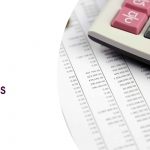Everything You Need to Know About Invoices
An invoice is a document you send to collect money owed to you for services you’ve provided or items you’ve sold. Essentially, an invoice is a bill that shows a specific order’s supplier, customer, date of service, when payment is due, and what exactly the services were.
An invoice also helps to establish an agreement between the supplier and customer to pay the supplier for the services or goods under the terms specified in the document. And for retailers, you can use invoices for a wide variety of reasons — from billing vendors to online orders.
Why Do I Need an Invoice?
The short answer is that you need to keep track of all items or services sold. The long answer? Well, this lies in your business’ bookkeeping. Basically invoices help ensure you receive payment for the goods you sold. Depending on the language you use in the documents, invoices can help you obtain the money vendors, suppliers, and customers owe you in a timely fashion. The bottom line is that invoices not only help you keep accurate records, but also ensure revenue remains steady and you don’t experience cash flow issues.
What Do I Include in an Invoice?
While invoice templates are a dime a dozen, it’s important to note that there’s not a one-size-fits-all solution for every business. So, always keep your bookkeeping needs and type of business in mind before landing on the format that works best for you.
Here’s what you should consider including in your business’ invoice template:
- Invoice Terminology
This one’s easy: Ensure you’re including the word “invoice” at the top of the document. Being clear about the document will help your customer understand the purpose of the document — and help distinguish the invoice from a purchase order if those are a part of your business’ records.
- Invoice Number
For record-keeping purposes, you’ll want to give each invoice a unique number based on the customer and good bookkeeping practices. To do this, create a naming convention that will help you distinguish one customer from another and one invoice from another for the same customer.
- Customer Information
The type of customer information you include in your invoice can vary based on what your business needs to know about them. However, it’s best to have the following to ensure you don’t have to rely on one method of contact:
- Business name
- Contact at business (this is usually in an “Attn:” line)
- Mailing address
- Billing address, if different than mailing address
- Email address
- Phone number
Generally, customer information is included at the top of the invoice.
- Supplier Information
Always include your business’ information on your invoice, using the same format as the customer information, and ensure it’s accurate. But keep one thing in mind: If your billing information is different than your standard information, include your billing information since your customer will need it to make their payment.
- Date of Invoice
Including the date of when the invoice was created is vital because it informs your customer of how long they have between the invoice’s creation date and the due date. This also helps you to know when you need to follow-up on payment, especially in the case of past-due invoices.
- Terms of Payment
Instead of expecting your customer to pay their invoice upon receipt, include payment terms in the invoice so you’re explicitly stating exactly when payment is due. The most common payment terms are “net 30 days,” which is 30 days from the invoice date. However, you don’t have to settle for 30 — this period can be based upon your business’ needs.
- Payment Details
This isn’t a mandatory item to include in your invoice, but it could be a great addition — especially if you’ve already experienced late payments or frequently asked questions about accepted methods of payment.
Here, you can include accepted payment types — like checks, bank transfers, credit cards, or cash. And you can even state what you charge if the payment is late.
- Description of Goods or Services
The description of the goods or services purchased is the most important part of the invoice, and it’s important that it should be split into at least four separate columns: quantity, description, unit price, and line total.
Quantity: This is where you highlight how many goods or services were purchased by a customer of a single product or service type.
Description: Be as descriptive as possible here, for each item in the invoice, to clearly state what the purchased item is. You can also go in depth on the labor or additional requests from the customer, if applicable. This may include the product’s SKU number as well as a physical description of the item.
Unit price: This is where you put the price of a single product or service.
- Sales Tax
Whether you should charge for sales tax is dependent upon your state and the type of goods or services you provide through your retail business. If you determine you should charge for sales tax, always include a section for this underneath the subtotal (sum of all line totals).
All businesses should strive to keep accurate records of all transactions, and invoices play a vital part in that monitoring when, where, what, and to whom you sold an item or service.
Visit Oscar.pk for more








